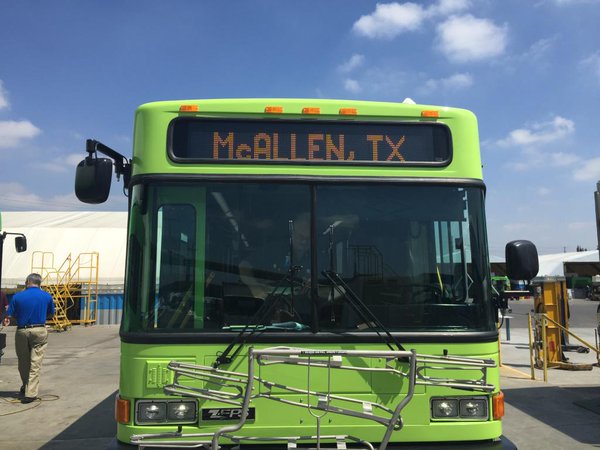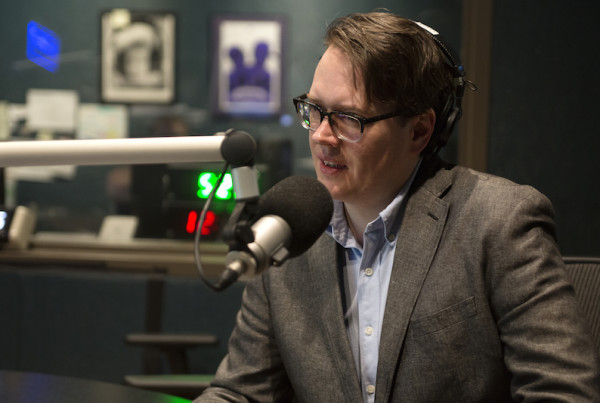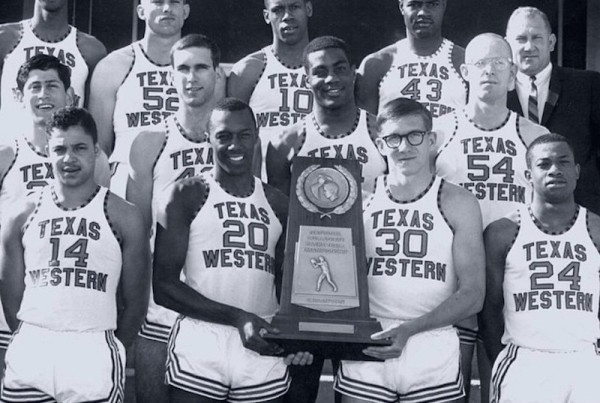Could you tell the difference between the sounds of these two busses? One is significantly quieter – it’s an all electric remanufactured zero-emission propulsion bus.
That mouthful means the bus doesn’t use any diesel gasoline. But it isn’t just electric.
“It’s also equipment with wireless charging technology,” says Mario Delgado, transit director for the City of McAllen.
So how exactly does a bus charge wirelessly?
“There’s a primary charging pad that is embedded on the road, and then the bus underneath has a secondary receiving pad,” Delgado says. “As the bus pulls over the primary charging pad on the street, it’s able to charge through the secondary pad on the bus through magnetic resonance. So you don’t have to plug into anything, and the bus charges as it’s idling over the pad.”
The technology is the first of its kind in Texas, at a price of $2.1 million for two buses. McAllen paid $200,000, and the Federal Transit Administration (FTA) paid the rest. It’s part of an FTA initiative to reduce carbon footprints.
But when it comes down to it, what’s the environmental impact a couple of buses can have in a state as large as Texas?
“Ultimately it’s about the bigger picture. You know, this is new technology,” Delgado says. “There’s going to be improvement on the technology moving forward and so it could be two for McAllen, but in the future there could potentially be more, and then other agencies across the U.S. and in the world will start using electric vehicles and substantially reduce the pollution and help the environment.”
Joe Zietsman with the Texas A&M Transportation Institute agrees. He leads the environment and air quality division at A&M and says McAllen’s buses are more than just “tokenism.”
“It’s a huge step. It just gives the message that they’re taking it seriously, they want to do it,” Zietsman says. “The actual number or the scale at this point is not that important.”
So why aren’t more public transit systems investing in green technology? Zietsman says the high price tag is a factor. But, he says, those prices will eventually go down.
“It’s basically like any new technology,” he says. “In the beginning it’s expensive. The cost comes down as economies of scale begin to kick in as more and more of these vehicles get into the marketplace. Initially one expects the government to help subsidize that because there are many other benefits that come into play when you start investing in these types of technologies.”
Back at the bus terminal in McAllen, Melissa Flores waits for her bus.
“Look at all this world pollution that’s going on,” Flores says. “The burning of the fuels of the cars. You know, me personally, having asthma, I hate smoke because it’s bad for me, so more electric would be great.”
Environmentalists agree more electric would be great. Some were pushing for it as far back as the 1800s. But there may be a little more time to wait before cities across Texas can afford more than just a few of these zero-emissions buses.















